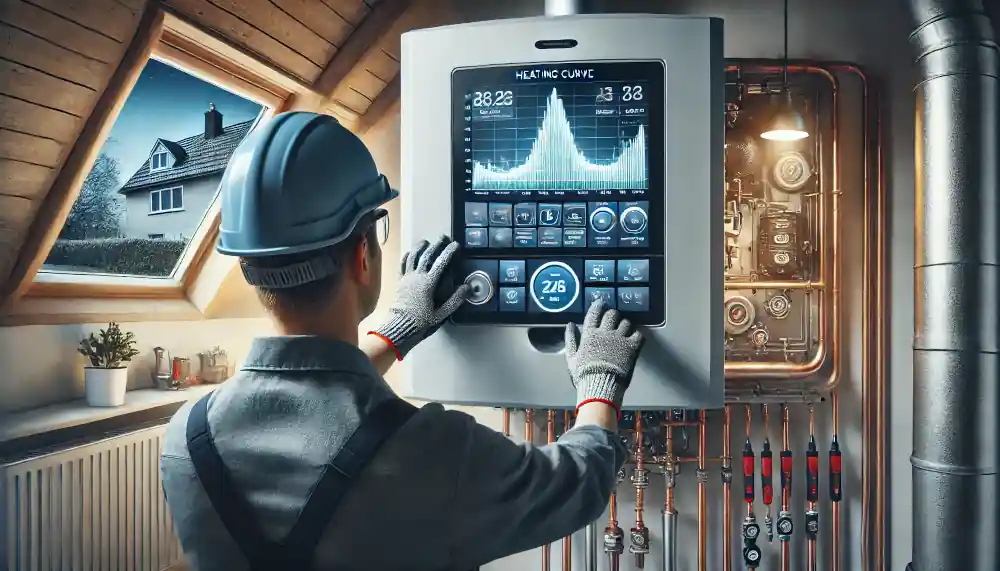Heating Curve Boilers: Optimize Efficiency Now
Heating systems are the backbone of comfort in residential and commercial buildings, especially in colder climates. Among the various components that ensure the efficiency of heating systems, the heating curve for boilers plays a pivotal role.
This curve, essential for setting the temperature of the water in the heating system relative to the outside temperature, needs careful adjustment to optimize energy consumption and enhance comfort. This article will delve into what a heating curve is, its significance, and how to fine-tune it based on the material of the heating elements such as cast iron radiators and underfloor heating.
Indice
What is a Heating Curve?
The heating curve, also known as the boiler curve or temperature curve, is a graph that represents the relationship between the outside temperature and the required indoor heating water temperature. The main goal of adjusting the heating curve is to ensure that the boiler operates efficiently, providing enough heat to maintain indoor comfort without wasting energy.
Importance of the Heating Curve in Boiler Systems
- Energy Efficiency: Properly adjusted, the heating curve helps maintain the balance between energy consumption and comfort.
- Comfort: Ensures that the indoor environment remains at a constant, comfortable temperature.
- Reduced Wear and Tear: Helps in preventing the boiler from cycling too frequently, which can lead to increased wear and tear.
Components of a Heating Curve
- Slope: This is the rate at which the heating water temperature changes in response to changes in outdoor temperature.
- Shift: Sometimes referred to as the parallel shift, this adjusts the entire curve up or down to increase or decrease the baseline water temperature.
Adjusting the Heating Curve Based on Material
Cast Iron Radiators
- Characteristics: Cast iron radiators require a higher water temperature due to their material properties and design.
- Adjustment: The slope for cast iron radiators should be steeper, as these radiators depend on higher temperatures to heat efficiently.
Underfloor Heating
- Characteristics: Underfloor heating systems require a lower water temperature spread over a large surface area.
- Adjustment: The slope for underfloor heating systems should be less steep, ensuring that the water temperature remains relatively low, avoiding damage to the flooring materials and ensuring comfort.
Steps to Adjust the Heating Curve
- Identify Your Heating System Type: Determine whether you have radiators, underfloor heating, or a combination.
- Measure the Outdoor and Desired Indoor Temperatures: Understanding these temperatures is crucial for setting your initial curve.
- Set the Initial Slope and Shift: Based on your system type, set an initial slope and shift.
- Monitor and Adjust: It may take several adjustments over a few days to find the optimal settings.
Tips for Fine-Tuning the Heating Curve
- Use a Digital Thermostat: Modern digital thermostats can help in more accurately setting and adjusting the heating curve.
- Regular Monitoring: Seasonal changes might require adjustments to the heating curve.
- Professional Assistance: Especially when dealing with mixed heating systems, professional input can help optimize settings.
FAQs
If your rooms are overheating, it’s advisable to further reduce the slope of the heating curve. This decreases the rate at which the water temperature increases relative to the outside temperature. Additionally, check if there is any over-calibration or incorrect settings in the thermostat and make sure that it accurately reflects the inside temperature.
It is recommended to review the heating curve settings at least once a season or whenever there are significant changes in weather patterns. Additionally, if there have been changes in the living space such as new windows, added insulation, or structural changes, it might be necessary to adjust the settings.
No, there is no universal setting for all boiler systems as each home and heating system has unique requirements based on insulation, window types, and overall design. Settings must be customized to individual circumstances to achieve optimal energy efficiency and comfort.
Yes, improvements in insulation significantly affect heating curve settings as they reduce the amount of heat needed to maintain a comfortable indoor temperature. After upgrading insulation, it is usually necessary to adjust the heating curve to lower settings to prevent overheating and conserve energy.
The heating curve directly influences heating costs by determining how efficiently your boiler operates. A well-adjusted heating curve ensures that the boiler provides exactly the amount of heat needed, minimizing wasted energy. Incorrect settings can lead to excessive energy consumption and higher costs.
Conclusion
Understanding and adjusting the heating curve of your boiler system is a key aspect of maintaining an efficient and comfortable heating environment. Whether your setup includes traditional cast iron radiators or modern underfloor heating, mastering the art of the heating curve ensures that your system operates at peak efficiency, saving you energy and money while extending the life of your boiler.

